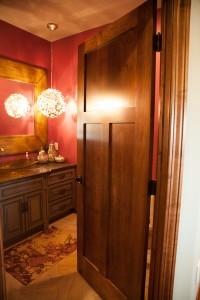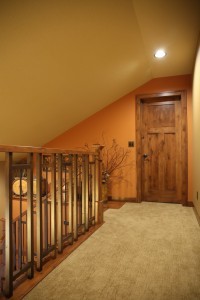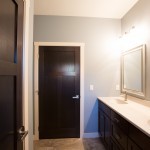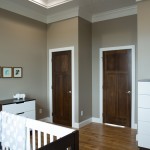We have many, many wood palettes coming into and leaving our plant on a daily basis. They come to us with raw product stacked on them and get recycled or reused when we’ve moved that product into inventory or onto our production lines.
But that’s not the palette featured in the blog today…
[pal-it]: 1. A thin and usually oval or oblong board or tablet with a hole on one end, used by painters for holding and mixing colors. 2. A range of colors used by a particular artist.
While selecting photos for our Pinterest boards, I’m often surprised how different the same door can look in two different settings. The contributing factors are always the quality and direction of the natural light source, the color of the paint on the walls. These factors and the other textiles and finishes in the room dictate what designers call, “the palette.”
In thirteen years of working with hundreds of homeowners on the design of their space, each one has had a unique palette. Sure, there are neutrals and whites that carry over from one home to the next and look great in every space but the temperature of each homeowners palette is always different. Some dislike warm, olive colored greens, while others gravitate towards them. Every color in the rainbow has a warm and cool variation. For example, greens can be very cool when they’re mixed with blue. Generally speaking, color temperature can be divided in this way: purple, blue and green are typically considered, “cool,” while yellow, orange and red are considered, “warm.”
Temperature? Of a palette? What? Let me explain. Better yet, let’s look at an example.
The first two pictures above show our three-panel interior doors in warm palettes. The color on the walls, the color of the prefinish stain and other finishes in the room are all from the warm end of the color spectrum.
To contrast, take a look at the next two images of the same door in these settings. Notice the difference? These are examples of a cool palette, with lots of cool blue tones and natural lighting which is likely coming from the north and east sides of the home. Warmer natural light comes from southern and western windows.
Take a look around your own home and try to discern what end of the color spectrum your palette is in and pay attention to the direction of your windows. If you have a room that seems cold, try adding warm finishes in that area of the house and see if you notice an actual change in the way that room feels.
-Holly Bayer, ASID




